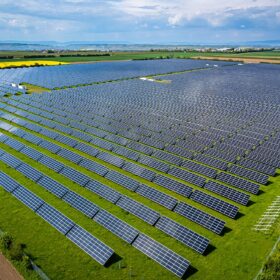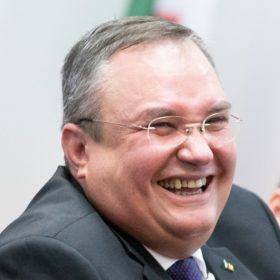Romanian utility launches tender for 12 MW solar project
Romanian utility Electrica SA has launched a tender for a 12 MW solar project. Engineering, procurement and construction (EPC) contractors have until July 27 to submit their offers.
Romanian oil supplier acquires 710 MW solar portfolio
Romania’s OMV Petrom has acquired a 710 MW solar project portfolio. It said that all of the PV installations are all close to the ready-to-build stage.
Romania removes legal barriers to development of large-scale solar
The Romanian president has passed a new law to shorten the permitting process for solar projects installed on less than 50 hectares of buildable land.
Cadmium telluride PV windows for domestic hot water production
Romania-based startup Photovoltaic Windows has developed an off-grid domestic hot water system powered by cadmium telluride (CdTe) photovoltaic semi-transparent glasses. It claims a 0.7 kW pilot installation on an apartment balcony in Bucharest resulted in annual savings of €1,100 ($1,202).
Romania introduces new rules for energy storage
The Romanian government has issued long-anticipated secondary regulations for the deployment of storage systems.
Romania allocates $666 million for solar rebates
The Romanian authorities say that its new state budget will facilitate the deployment of more than 150,000 PV systems.
Romania reduces VAT on residential solar to 5%
The Romanian parliament adopted a reduction from 19% to 5% on value-added tax (VAT) on PV panels for use in residential homes and public buildings.
Romania to expedite permitting process for solar on agricultural land
The Romanian president has passed a new law to shorten the permitting process for solar projects built on less than 50 hectares of agricultural land.
Romanian government accepting proposals for renewables auction
The Romanian Ministry of Energy has started seeking expressions of interest for its first renewables auction, likely to be held the end of June. Developers have until Dec. 30 to express interest.
Romania simplifies grid-connection process for distributed solar
The Romanian government has decided to make it easier to connect rooftop PV systems to the grid. The new rules, which will go into force soon, could spur the development of solar arrays under the country’s net metering regime.










